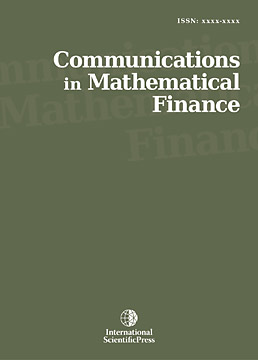Communications in Mathematical Finance
Compound Interest Doubling Time Rule: Extensions and Examples from Antiquities
-
 [ Download ]
[ Download ]
- Times downloaded: 10485
-
Abstract
Compound interest calculations are used in most financial transactions concerning loans and investments. Of special interest, is calculating the time it takes a principal to double at a certain compound interest rate. This article starts by discussing the famous Rule of 70 (or 72) that gives a simple estimate of the doubling time under compound interest. The Rule of 70 is then extended to estimate the time for a principal to grow to a higher fold (triple, quadruple, etc.) under compounding. Finally, this article shows that doubling time (or to higher folds) calculations were carried out in antiquity as evidenced by many excavated ancient cuneiform texts from Mesopotamia (c. 2000 BCE).
